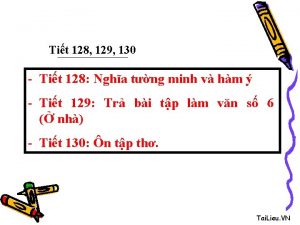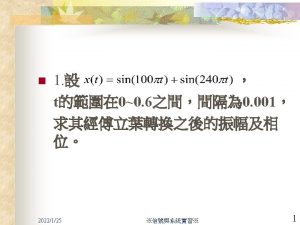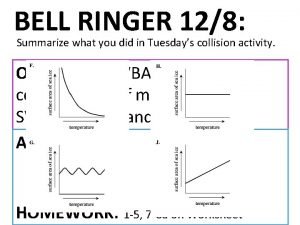y1 2 4 8 16 32 64 128



















![® y=[1, 2, 4, 8, 16, 32, 64, 128]; plot(y) ® y=[1, 2, 4, 8, 16, 32, 64, 128]; plot(y)](https://slidetodoc.com/presentation_image/2352750ba28786b793b455ba8b166d8d/image-20.jpg)
![® y=[0, 1, 2; 3, 4, 5; 6, 7, 8]; plot(y) ® y=[0, 1, 2; 3, 4, 5; 6, 7, 8]; plot(y)](https://slidetodoc.com/presentation_image/2352750ba28786b793b455ba8b166d8d/image-21.jpg)
![® x=[1: 1: 100]; y=[2: 2: 200]; z=x+y. *i; plot(z) ® x=[1: 1: 100]; y=[2: 2: 200]; z=x+y. *i; plot(z)](https://slidetodoc.com/presentation_image/2352750ba28786b793b455ba8b166d8d/image-22.jpg)



















![income=[3. 2 4. 1 5. 0 5. 6] outgo=[2. 5 4. 0 3. 35 income=[3. 2 4. 1 5. 0 5. 6] outgo=[2. 5 4. 0 3. 35](https://slidetodoc.com/presentation_image/2352750ba28786b793b455ba8b166d8d/image-42.jpg)
![subplot('position', [left bottom width height]) 在由 4个元素指定的位置上创建一坐标轴 subplot('position', [left bottom width height]) 在由 4个元素指定的位置上创建一坐标轴](https://slidetodoc.com/presentation_image/2352750ba28786b793b455ba8b166d8d/image-43.jpg)












![fplot('[sin(x), tan(x), cos(x)]', 2*pi*[-1 1]) fplot('humps', [0 1], 'rp') fplot('[sin(x), tan(x), cos(x)]', 2*pi*[-1 1]) fplot('humps', [0 1], 'rp')](https://slidetodoc.com/presentation_image/2352750ba28786b793b455ba8b166d8d/image-56.jpg)

![ezplot('sin(x)') ezplot('sin(x)', 'cos(y)', [-4*pi], figure(2)) ezplot('sin(x)') ezplot('sin(x)', 'cos(y)', [-4*pi], figure(2))](https://slidetodoc.com/presentation_image/2352750ba28786b793b455ba8b166d8d/image-58.jpg)
![f=sym('x^2+1'); subplot(2, 2, 1) ezplot(f, [-2, 2]) subplot(2, 2, 2) ezplot('y-x^2 -1', [-2, 2], f=sym('x^2+1'); subplot(2, 2, 1) ezplot(f, [-2, 2]) subplot(2, 2, 2) ezplot('y-x^2 -1', [-2, 2],](https://slidetodoc.com/presentation_image/2352750ba28786b793b455ba8b166d8d/image-59.jpg)











![例:绘制向量 t=[0: pi/100: 2*pi]; x=[sin(t)]; y=[cos(t) cos(t)]; z=[(sin(t)). ^2+(cos(t)). ^2+1 ]; plot 3(x, y, 例:绘制向量 t=[0: pi/100: 2*pi]; x=[sin(t)]; y=[cos(t) cos(t)]; z=[(sin(t)). ^2+(cos(t)). ^2+1 ]; plot 3(x, y,](https://slidetodoc.com/presentation_image/2352750ba28786b793b455ba8b166d8d/image-71.jpg)





![例: 8阶hadamard矩阵的网线图 h 2=[1 1; 1 -1]; h 4=[h 2 h 2; h 2 例: 8阶hadamard矩阵的网线图 h 2=[1 1; 1 -1]; h 4=[h 2 h 2; h 2](https://slidetodoc.com/presentation_image/2352750ba28786b793b455ba8b166d8d/image-77.jpg)

![例:x=[0: 0. 1: 5; 2: 0. 1: 7]; mesh(x) 例:x=[0: 0. 1: 5; 2: 0. 1: 7]; mesh(x)](https://slidetodoc.com/presentation_image/2352750ba28786b793b455ba8b166d8d/image-79.jpg)











![surfc(X, Y, Z) — 带等高线的曲面图 [X, Y, Z]=peaks(30); surfc(X, Y, Z) surfc(X, Y, Z) — 带等高线的曲面图 [X, Y, Z]=peaks(30); surfc(X, Y, Z)](https://slidetodoc.com/presentation_image/2352750ba28786b793b455ba8b166d8d/image-91.jpg)














![[X, Y, Z]=peaks(30); surfl(X, Y, Z) shading interp; colormap(cool); axis off [X, Y, Z]=peaks(30); surfl(X, Y, Z) shading interp; colormap(cool); axis off](https://slidetodoc.com/presentation_image/2352750ba28786b793b455ba8b166d8d/image-106.jpg)






















![例:图形放大 [x, y] = meshgrid([-1. 05: 0. 2: 3. 75]); z = x. *exp(-x. 例:图形放大 [x, y] = meshgrid([-1. 05: 0. 2: 3. 75]); z = x. *exp(-x.](https://slidetodoc.com/presentation_image/2352750ba28786b793b455ba8b166d8d/image-129.jpg)













![例:阶梯绘图 h 2=[1 1; 1 -1]; h 4=[h 2 h 2; h 2 -h 例:阶梯绘图 h 2=[1 1; 1 -1]; h 4=[h 2 h 2; h 2 -h](https://slidetodoc.com/presentation_image/2352750ba28786b793b455ba8b166d8d/image-143.jpg)
![h 2=[1 1; 1 -1]; h 4=[h 2 h 2; h 2 -h 2]; h 2=[1 1; 1 -1]; h 4=[h 2 h 2; h 2 -h 2];](https://slidetodoc.com/presentation_image/2352750ba28786b793b455ba8b166d8d/image-144.jpg)








- Slides: 152



















![y1 2 4 8 16 32 64 128 ploty ® y=[1, 2, 4, 8, 16, 32, 64, 128]; plot(y)](https://slidetodoc.com/presentation_image/2352750ba28786b793b455ba8b166d8d/image-20.jpg)
® y=[1, 2, 4, 8, 16, 32, 64, 128]; plot(y)
![y0 1 2 3 4 5 6 7 8 ploty ® y=[0, 1, 2; 3, 4, 5; 6, 7, 8]; plot(y)](https://slidetodoc.com/presentation_image/2352750ba28786b793b455ba8b166d8d/image-21.jpg)
® y=[0, 1, 2; 3, 4, 5; 6, 7, 8]; plot(y)
![x1 1 100 y2 2 200 zxy i plotz ® x=[1: 1: 100]; y=[2: 2: 200]; z=x+y. *i; plot(z)](https://slidetodoc.com/presentation_image/2352750ba28786b793b455ba8b166d8d/image-22.jpg)
® x=[1: 1: 100]; y=[2: 2: 200]; z=x+y. *i; plot(z)


例:用plot(x, y)绘制双向量 x=0: 0. 1: 10; y=sin(x)+2; plot(x, y)


® plot(x 1, y 1, x 2, y 2…) —— 多条曲线绘图格式。 例:x 1=0: 0. 1: 10; y 1=sin(x 1); x 2=0: 0. 1: 10; y 2=cos(x 2); x 3=0: 0. 1: 10; y 3=sin(x 3)+cos(x 3); plot(x 1, y 1, x 2, y 2, x 3, y 3)



matlab 7. 1线形: [ + | o | * |. | x | square | diamond | v | ^ | > | < | pentagram | hexagram ] square 正方形 diamond 菱形 pentagram 五角星 hexagram 六角星 Demo: demos/matlab/graphics/line plotting

例:plot(x, sin(x), '-. rd')



2. 单窗口多曲线绘图 例2:t=0: pi/100: 2*pi; y=sin(t); y 1=sin(t+0. 25); y 2=sin(t+0. 5); plot(t, y, t, y 1, t, y 2) y y 1 y 2

例 3:y=sin(t); y 1=sin(t+0. 25); y 2=sin(t+0. 5); y 3=cos(t); y 4=cos(t+0. 25); y 5=cos(t+0. 5); plot(t, [y', y 1', y 2', y 3', y 4', y 5'])

y 3=cos(t); y 4=cos(t+0. 25); y 5=cos(t+0. 5); plot(t, y 3); hold on; plot(t, y 4); plot(t, y 5);

x=peaks; plot(x) %此时查看x变量

® x=1: length(peaks); y=peaks; plot(x, y)



t=0: pi/100: 2*pi; y=sin(t); y 1=sin(t+0. 25); y 2=sin(t+0. 5); y 3=cos(t); subplot(1, 3, 1); plot(t, y) subplot(1, 3, 2); plot(t, y 3) subplot(1, 3, 3); plot(t, y 2)

subplot(3, 1, 1); plot(t, y) subplot(3, 1, 2); plot(t, y 3) subplot(3, 1, 3); plot(t, y 2)
![income3 2 4 1 5 0 5 6 outgo2 5 4 0 3 35 income=[3. 2 4. 1 5. 0 5. 6] outgo=[2. 5 4. 0 3. 35](https://slidetodoc.com/presentation_image/2352750ba28786b793b455ba8b166d8d/image-42.jpg)
income=[3. 2 4. 1 5. 0 5. 6] outgo=[2. 5 4. 0 3. 35 4. 9] subplot(2, 1, 1), plot(income) subplot(2, 1, 2), plot(outgo)
![subplotposition left bottom width height 在由 4个元素指定的位置上创建一坐标轴 subplot('position', [left bottom width height]) 在由 4个元素指定的位置上创建一坐标轴](https://slidetodoc.com/presentation_image/2352750ba28786b793b455ba8b166d8d/image-43.jpg)
subplot('position', [left bottom width height]) 在由 4个元素指定的位置上创建一坐标轴







例:t=0: 0. 1: 10 y 1=sin(t); y 2=cos(t); plot(t, y 1, 'r', t, y 2, 'b--'); x=[1. 7*pi; 1. 6*pi]; y=[-0. 3; 0. 8]; s=['sin(t)'; 'cos(t)']; text(x, y, s); title('正弦和余弦曲线'); legend('正弦', '余弦') xlabel('时间t'), ylabel('正弦、余弦') grid axis square


2 4 6 时间t 8 10



![fplotsinx tanx cosx 2pi1 1 fplothumps 0 1 rp fplot('[sin(x), tan(x), cos(x)]', 2*pi*[-1 1]) fplot('humps', [0 1], 'rp')](https://slidetodoc.com/presentation_image/2352750ba28786b793b455ba8b166d8d/image-56.jpg)
fplot('[sin(x), tan(x), cos(x)]', 2*pi*[-1 1]) fplot('humps', [0 1], 'rp')

![ezplotsinx ezplotsinx cosy 4pi figure2 ezplot('sin(x)') ezplot('sin(x)', 'cos(y)', [-4*pi], figure(2))](https://slidetodoc.com/presentation_image/2352750ba28786b793b455ba8b166d8d/image-58.jpg)
ezplot('sin(x)') ezplot('sin(x)', 'cos(y)', [-4*pi], figure(2))
![fsymx21 subplot2 2 1 ezplotf 2 2 subplot2 2 2 ezplotyx2 1 2 2 f=sym('x^2+1'); subplot(2, 2, 1) ezplot(f, [-2, 2]) subplot(2, 2, 2) ezplot('y-x^2 -1', [-2, 2],](https://slidetodoc.com/presentation_image/2352750ba28786b793b455ba8b166d8d/image-59.jpg)
f=sym('x^2+1'); subplot(2, 2, 1) ezplot(f, [-2, 2]) subplot(2, 2, 2) ezplot('y-x^2 -1', [-2, 2], [0, 10]) x=sym('cos(t)'); y=sym('sin(t)'); subplot(2, 2, 3) ezplot(x, y)










例:绘制三维曲线图 t=0: pi/50: 10*pi; plot 3(t, sin(t), cos(t), 'r: ')

例:绘制三维螺旋线 t=0: pi/50: 10*pi; plot 3(cos(t), sin(t), t, 'r: ')
![例绘制向量 t0 pi100 2pi xsint ycost cost zsint 2cost 21 plot 3x y 例:绘制向量 t=[0: pi/100: 2*pi]; x=[sin(t)]; y=[cos(t) cos(t)]; z=[(sin(t)). ^2+(cos(t)). ^2+1 ]; plot 3(x, y,](https://slidetodoc.com/presentation_image/2352750ba28786b793b455ba8b166d8d/image-71.jpg)
例:绘制向量 t=[0: pi/100: 2*pi]; x=[sin(t)]; y=[cos(t) cos(t)]; z=[(sin(t)). ^2+(cos(t)). ^2+1 ]; plot 3(x, y, z, 'r: ')


例:矩阵的三维网格图 z=rand(6); 0. 8808 0. 0729 0. 4168 0. 7694 0. 3775 0. 4776 0. 3381 0. 7101 0. 0964 0. 6352 0. 3826 0. 7086 0. 1895 0. 8791 0. 6747 0. 8965 0. 6876 0. 2380 0. 7431 0. 3594 0. 5626 0. 8784 0. 1217 0. 3910 0. 7189 0. 0899 0. 8130 0. 4865 0. 0768 0. 9759 0. 8792 0. 1610 0. 8782 0. 1131 0. 1433 0. 6288 mesh(z)


z=round(z) 1 0 0 0 1 0 1 1 1 1 0 0 1 0 0 1 mesh(z)

![例 8阶hadamard矩阵的网线图 h 21 1 1 1 h 4h 2 h 2 h 2 例: 8阶hadamard矩阵的网线图 h 2=[1 1; 1 -1]; h 4=[h 2 h 2; h 2](https://slidetodoc.com/presentation_image/2352750ba28786b793b455ba8b166d8d/image-77.jpg)
例: 8阶hadamard矩阵的网线图 h 2=[1 1; 1 -1]; h 4=[h 2 h 2; h 2 -h 2] h 8=[h 4 h 4; h 4 -h 4] 1 1 1 1 1 -1 1 1 -1 -1 1 -1 -1 1 1 1 -1 -1 1 -1 1 1 -1 mesh(h 8)

![例x0 0 1 5 2 0 1 7 meshx 例:x=[0: 0. 1: 5; 2: 0. 1: 7]; mesh(x)](https://slidetodoc.com/presentation_image/2352750ba28786b793b455ba8b166d8d/image-79.jpg)
例:x=[0: 0. 1: 5; 2: 0. 1: 7]; mesh(x)











![surfcX Y Z 带等高线的曲面图 X Y Zpeaks30 surfcX Y Z surfc(X, Y, Z) — 带等高线的曲面图 [X, Y, Z]=peaks(30); surfc(X, Y, Z)](https://slidetodoc.com/presentation_image/2352750ba28786b793b455ba8b166d8d/image-91.jpg)
surfc(X, Y, Z) — 带等高线的曲面图 [X, Y, Z]=peaks(30); surfc(X, Y, Z)








y 1=rand(3, 5); y 2=rand(3, 5); y 3=rand(3, 5); fill 3(y 1, y 2, y 3, 'm'); hold on; plot 3(y 1, y 2, y 3, 'yo')






peaks(30); shading interp; colormap(hot)
![X Y Zpeaks30 surflX Y Z shading interp colormapcool axis off [X, Y, Z]=peaks(30); surfl(X, Y, Z) shading interp; colormap(cool); axis off](https://slidetodoc.com/presentation_image/2352750ba28786b793b455ba8b166d8d/image-106.jpg)
[X, Y, Z]=peaks(30); surfl(X, Y, Z) shading interp; colormap(cool); axis off

peaks(30); colormap(hot); colorbar('horiz') figure(2); colormap(cool);


® 透视与消隐 p=peaks(30); mesh(p);hidden on(消隐)

p=peaks(30); mesh(p); hidden off


® 裁减修饰 p=peaks; p(30: 40, 20: 30)=nan*p(30: 40, 20: 30); surf(p)

p=peaks; p(30: 40, 20: 30)=nan*p(30: 40, 20: 30); mesh(peaks, p)

® 视角修饰(函数view(az, el)) az ----方位角;el ---- 俯视角 省缺值为:az=-37. 5; el=30 例:观察不同视角的波峰图形 z=peaks(40); subplot(2, 2, 1); mesh(z); subplot(2, 2, 2); mesh(z); view(-15, 60); subplot(2, 2, 3); mesh(z); view(-90, 0); subplot(2, 2, 4); mesh(z); view(-7, -10);


® 其它修饰: a. 水线修饰(waterfall) waterfall(peaks(30))



contour 3(peaks, 20) Demo: demos/…/3 D-surface plots




模拟平抛运动 vx = 40; t = 0: 0. 001: 10; x = vx*t; y = -9. 8*t. ^2/2; comet(x, y, 0. 22)

模拟导弹发射 vx = 100*cos(1/4*pi); vy = 100*sin(1/4*pi); t = 0: 0. 001: 15; x = vx*t; y = vy*t-9. 8*t. ^2/2; comet(x, y)




例: axis equal %坐标相同 M=moviein(8) %产生矩阵 set(gca, 'Nextplot', 'replacechildren') for j=1: 8 plot(fft(eye(j+8))) %eye为单位矩阵,fft为快速傅立叶变换 M(: , j)=getframe; end movie(M, 2, 1) %M为播放对象,2为播放次 数,1为每秒播放的帧数,默认为 12
![例图形放大 x y meshgrid1 05 0 2 3 75 z x expx 例:图形放大 [x, y] = meshgrid([-1. 05: 0. 2: 3. 75]); z = x. *exp(-x.](https://slidetodoc.com/presentation_image/2352750ba28786b793b455ba8b166d8d/image-129.jpg)
例:图形放大 [x, y] = meshgrid([-1. 05: 0. 2: 3. 75]); z = x. *exp(-x. ^2 -y. ^2); axis tight; %axis limits to the range of the data set(gca, 'nextplot', 'replacechildren'); for j = 1: 40 surf(x*sin(pi*j/100), y*sin(pi*j/100), z*sin(pi*j/100)); m(j) = getframe end movie(m)

例:仿vibrating logo Z = peaks; surf(Z); axis tight set(gca, 'nextplot', 'replacechildren'); % Record the movie for j = 1: 20 surf(sin(2*pi*j/20)*Z, Z) F(j) = getframe; end % Play the movie twenty times movie(F, 20)

例:动态加星曲线 clc; clear; x=0; n=40; %set(gca, 'nextplot', 'replacechildren'); for j=1: n x(j+1)=x(j)+2*pi/n; y=sin(x); plot(x, y, '*-'), axis([0 2*pi -1 1]), grid on M(j) = getframe; end movie(M)

例:一球绕一曲线前进 clc; clear; n=100; x=0: pi/n: 2*pi y=sin(x); k=0; for t=0: pi/n: 2*pi k=k+1; x(k)=t y(k)=sin(t); m=plot(x, y, x(k), y(k), 'or') grid getframe; end


例:旋转红点 x = -pi: pi/30: pi; h = plot(x, cos(x), 'o', 'Marker. Edge. Color', 'k', 'Marker. F ace. Color', 'Marker. Size', 8, 'Erase. Mode', 'Xor') for j = 1: 10000 y = 1/2*sin(3*x+0. 006*j); set(h, 'ydata', y); drawnow; end




Y=[5 2 1; 8 7 3; 9 8 6; 5 5 4; 4 3 2]; subplot(2, 2, 1) bar(Y) box off subplot(2, 2, 2) bar 3(Y) %三维垂直条图 subplot(2, 2, 3) barh(Y) %二维水平条图 subplot(2, 2, 4) bar 3 h(Y) %三维水平条图




例:绘制阶梯曲线 x=0: pi/20: 2*pi; y=sin(x); stairs(x, y)
![例阶梯绘图 h 21 1 1 1 h 4h 2 h 2 h 2 h 例:阶梯绘图 h 2=[1 1; 1 -1]; h 4=[h 2 h 2; h 2 -h](https://slidetodoc.com/presentation_image/2352750ba28786b793b455ba8b166d8d/image-143.jpg)
例:阶梯绘图 h 2=[1 1; 1 -1]; h 4=[h 2 h 2; h 2 -h 2]; h 8=[h 4 h 4; h 4 -h 4]; t=1: 8; subplot(8, 1, 1); stairs(t, h 8(1, : )); axis('off') subplot(8, 1, 2); stairs(t, h 8(2, : )); axis('off') subplot(8, 1, 3); stairs(t, h 8(3, : )); axis('off') subplot(8, 1, 4); stairs(t, h 8(4, : )); axis('off') subplot(8, 1, 5); stairs(t, h 8(5, : )); axis('off') subplot(8, 1, 6); stairs(t, h 8(6, : )); axis('off') subplot(8, 1, 7); stairs(t, h 8(7, : )); axis('off') subplot(8, 1, 8); stairs(t, h 8(8, : )); axis('off')
![h 21 1 1 1 h 4h 2 h 2 h 2 h 2 h 2=[1 1; 1 -1]; h 4=[h 2 h 2; h 2 -h 2];](https://slidetodoc.com/presentation_image/2352750ba28786b793b455ba8b166d8d/image-144.jpg)
h 2=[1 1; 1 -1]; h 4=[h 2 h 2; h 2 -h 2]; h 8=[h 4 h 4; h 4 -h 4]; t=1: 8; for i=1: 8 subplot(8, 1, i); stairs(t, h 8(i, : )) axis('off') end 返回



例:绘制彗星曲线图 t= -pi: pi/500: pi; y=tan(sin(t))-sin(tan(t)); comet(t, y) 返 回



pie(x, y, {'North', 'South', 'East', 'West', 'middle', 'fa', 'white'}) 返 回

例:绘制离散点图 load seamount ——海山 scatter(x, y, 50, z)

a=rand(200, 1); b=rand(200, 1); c=rand(200, 1); scatter(a, b, 100, c, 'p') 返 回
 Chapter 5 cash control systems answer key
Chapter 5 cash control systems answer key Sha 128
Sha 128![Chars = [0] * 128 Chars = [0] * 128](data:image/svg+xml,%3Csvg%20xmlns=%22http://www.w3.org/2000/svg%22%20viewBox=%220%200%20200%20200%22%3E%3C/svg%3E) Chars = [0] * 128
Chars = [0] * 128 Jewosu
Jewosu Ilo 128 elle taşıma
Ilo 128 elle taşıma Dersn
Dersn 128 to binary
128 to binary Ilo 128 sayılı tavsiye kararı metni
Ilo 128 sayılı tavsiye kararı metni 1+2+4+8+16+32+64+128
1+2+4+8+16+32+64+128 Programar vista 128
Programar vista 128 Quizizz code
Quizizz code Garis arsir iso r 128
Garis arsir iso r 128 Página 128 de español tercer grado
Página 128 de español tercer grado Conocimiento del medio página 128 primer grado
Conocimiento del medio página 128 primer grado Dios nos da nuevas oportunidades
Dios nos da nuevas oportunidades 128+64+2+1
128+64+2+1 Computer set an/uyk-128(v)3
Computer set an/uyk-128(v)3 128 in binary
128 in binary Sinüs cetveli nedir
Sinüs cetveli nedir 128 bit address
128 bit address Char(0)
Char(0) Dowelltech
Dowelltech 128 64 32 16 8 4 2 1
128 64 32 16 8 4 2 1 Salmo 128
Salmo 128 Dk 128
Dk 128 An/uyk-128a(v)3
An/uyk-128a(v)3 Salmo 29 estudo
Salmo 29 estudo Estimated average glucose 128
Estimated average glucose 128 Pkj 128 not angka
Pkj 128 not angka 192-168-
192-168- 168,192,1,1
168,192,1,1 128 + 64 + 32 + 16 + 8 + 4 + 2 + 1
128 + 64 + 32 + 16 + 8 + 4 + 2 + 1 Timer
Timer Isbt product code lookup
Isbt product code lookup Light tanker for supplying water or fuel
Light tanker for supplying water or fuel Avr
Avr 128 64 32 16 8 4 2 1
128 64 32 16 8 4 2 1 Kepmenkes no 128 tahun 2004
Kepmenkes no 128 tahun 2004 An address with 128 alternative 1s and 0s
An address with 128 alternative 1s and 0s Bmi solving example
Bmi solving example Enfoque pedagogico conocimiento del medio
Enfoque pedagogico conocimiento del medio Iq 128
Iq 128 Active recall
Active recall Ce 128
Ce 128 Assignment csc 128
Assignment csc 128 True or false calculator
True or false calculator Terms review 5-1 accounting
Terms review 5-1 accounting Trp 128
Trp 128![Chars = [0] * 128 Chars = [0] * 128](data:image/svg+xml,%3Csvg%20xmlns=%22http://www.w3.org/2000/svg%22%20viewBox=%220%200%20200%20200%22%3E%3C/svg%3E) Chars = [0] * 128
Chars = [0] * 128 128+64+32+16
128+64+32+16![Chars = [0] * 128 Chars = [0] * 128](data:image/svg+xml,%3Csvg%20xmlns=%22http://www.w3.org/2000/svg%22%20viewBox=%220%200%20200%20200%22%3E%3C/svg%3E) Chars = [0] * 128
Chars = [0] * 128 Erg green highlight
Erg green highlight


![Chars = [0] * 128 Chars = [0] * 128](https://slidetodoc.com/wp-content/uploads/2020/11/2253675_8306baa31f7a842cb260253fcf8641e4-300x225.jpg)









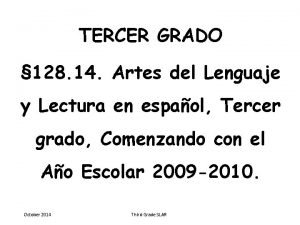
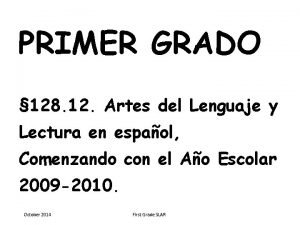



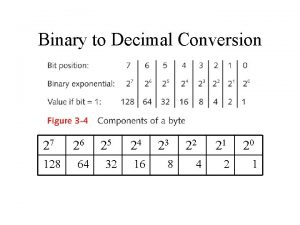













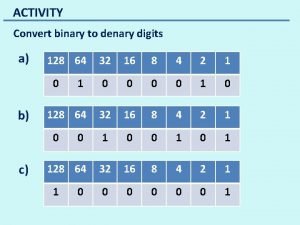
















![Chars = [0] * 128 Chars = [0] * 128](https://slidetodoc.com/wp-content/uploads/2020/11/2552879_9e37114c6b84c82c1e68cd05d41a4f8b-300x225.jpg)
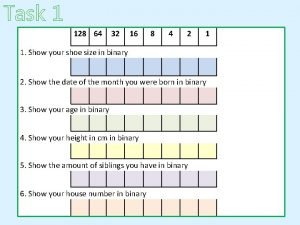
![Chars = [0] * 128 Chars = [0] * 128](https://slidetodoc.com/wp-content/uploads/2021/03/4280000_1c54efc359edbb9b02a7ca0198c495f3-300x225.jpg)




